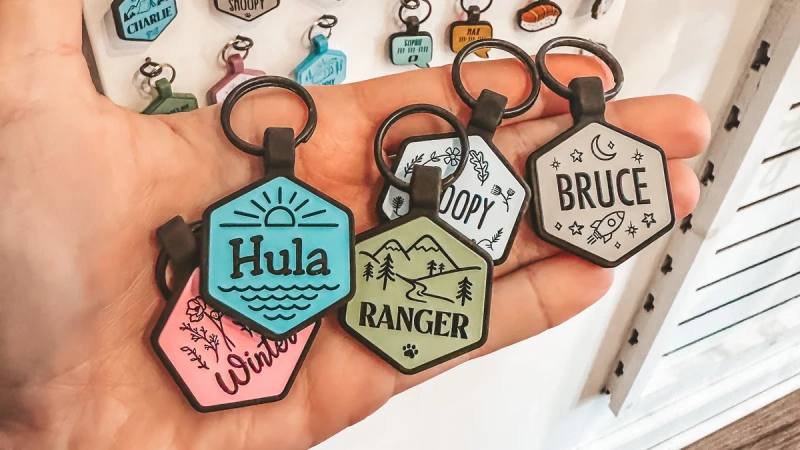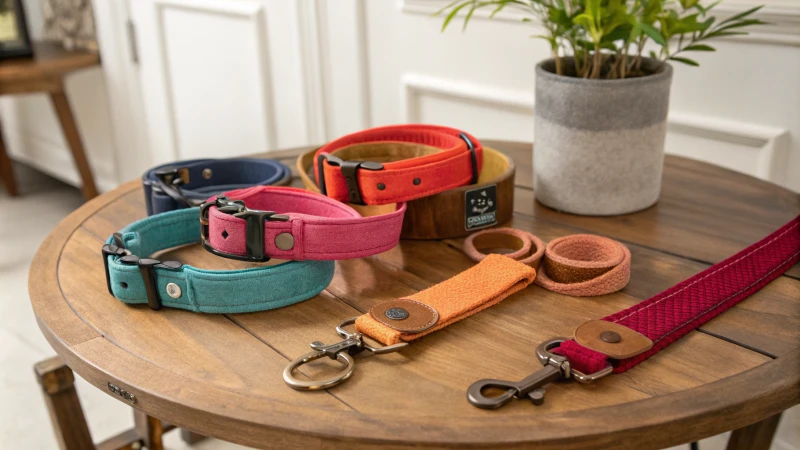
All dog owners understand the happiness that comes from discovering the perfect item that really gets their pup’s tail wagging with joy.
The best accessories for your dog are harnesses, collars, leashes, training tools, safety gear and comfort items. Each provides safety. Each brings comfort. Each adds enjoyment during activities. Your dog deserves this.
I recall the first time I took home a new harness for my dog; it felt like Christmas morning! Harnesses and collars may appear basic, but they are essential for your dog’s safety and comfort. Choosing the right type for your furry friend changes your walks and adventures together. Different accessories not only improve your dog’s daily routine but also deepen the connection between you two.
Harnesses are safer than collars for dog walks.True
Harnesses distribute pressure evenly, reducing strain on the neck.
All dogs require the same type of leash.False
Different dogs need different leashes based on size and activity level.
How do I choose the right dog harness?
Picking the best dog harness feels like finding the right shoes. Comfort and fit matter.
Selecting the right dog harness depends on your dog’s size, how they behave and how active they are. Adjustable harnesses fit different sizes as dogs grow. Padded harnesses provide comfort. Styles such as no-pull or escape-proof address specific behavior needs.
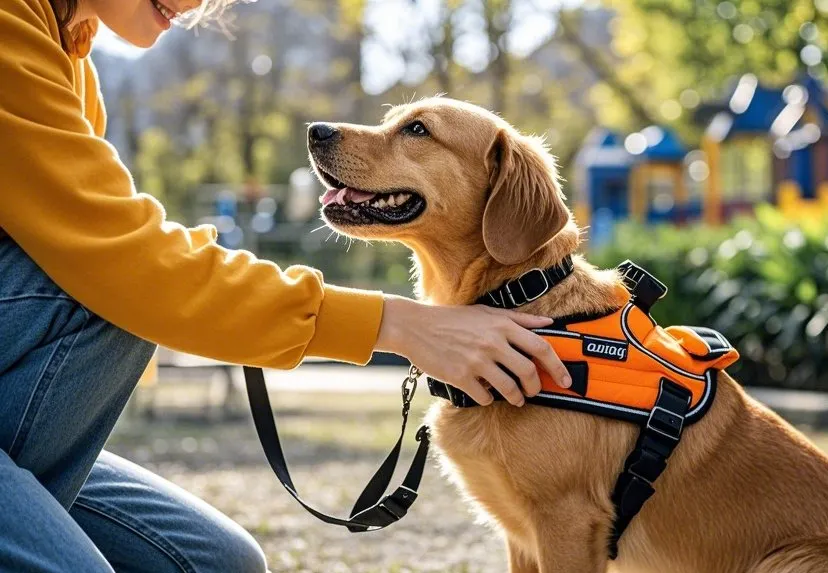
Understanding Your Dog’s Needs
The first time I selected a harness for my dog, the many options felt confusing. Soon, I understood that I needed to know what my dog really wants. If your dog, like mine, pulls a lot during walks, a no-pull harness1 is probably just right. For dogs who slip out easily, an escape-proof harness is very helpful. It’s true, knowing these things really simplifies your choice.
Types of Dog Harnesses
No-Pull Harnesses: These changed everything for us! They direct pulling energy, thanks to the smart front clip. It was perfect for training and made walks more fun.
Escape-Proof Harnesses: My friend’s dog escapes many harnesses, but the escape-proof model with several adjustments changed that. Worry-free walks followed.
| Type | Benefits |
|---|---|
| No-Pull | Reduces pulling |
| Escape-Proof | Secure fit |
Material Considerations
Comfort is important with materials. I tried a leather harness2 because it lasts and it shaped to my dog over time. Nylon is light and easy to clean, which really helps after muddy park trips.
Size and Fit
The correct fit was very important for us. I looked at a size chart to measure my dog’s chest and neck. I wanted it neither too tight nor too loose. With adjustable straps, I could allow for changes in weight, especially after my dog gained extra weight during the winter.
Additional Features
Think about what extra things might help you. We needed reflective strips for evening walks and a handle on top for busy sidewalks or lifting quickly.
Focus on your dog’s special needs, harness type, material and fit. These help you choose a harness that is safe and comfortable. Walks should be enjoyable for both of you!
No-pull harnesses reduce pulling by redistributing pressure.True
No-pull harnesses have a front clip that discourages pulling.
Leather harnesses are lightweight and easy to clean.False
Leather harnesses are durable but heavier and harder to clean.
What Types of Collars Are Best for Training?
Overwhelmed by the huge number of dog collars available? I felt that way when I began training my puppy. Let’s explore which collars truly help when training our furry companions.
Martingale collars and head halters are the best for training dogs. Martingale collars give soft corrections. Head halters provide control over the dog’s head but do not cause harm. These tools are very good for kind and effective training.
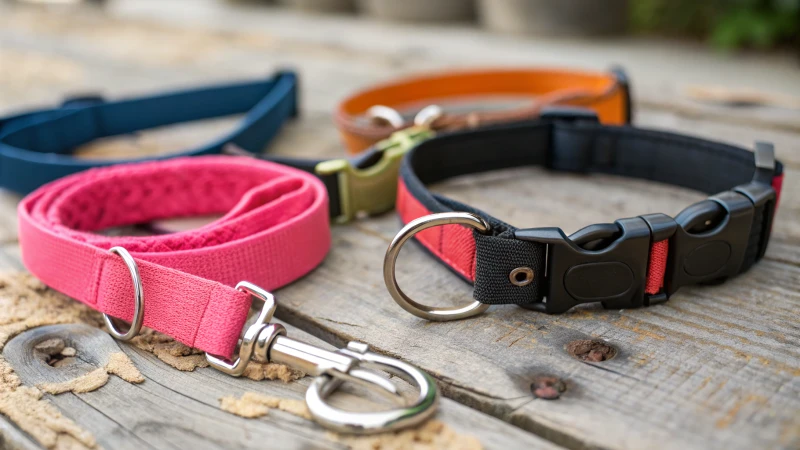
Understanding Different Collar Types
Starting my journey of training my dog felt like cracking a complex code. Here’s a simple guide about common collar types for training, based on my own experiences and chats with other dog owners.
| Collar Type | Features | Best For |
|---|---|---|
| Martingale | Gentle correction, reduces slipping | Dogs prone to slip out of collars |
| Prong/Pinch | Evenly distributes pressure around the neck | Strong-willed dogs with professional guidance |
| Head Halter | Controls head direction, prevents pulling | Dogs that pull excessively |
| Choke Chain | Offers quick corrections | Experienced trainers only |
Martingale Collars
Martingale collars really became my choice after my dog Houdini escaped from every other collar. They gently correct without choking, tightening just a little to stop escapes. Ideal for dogs who love escaping! Often recommended for dogs that tend to slip out3, this collar tightens slightly when pulled, preventing escape but without the harshness of choke chains.
Prong or Pinch Collars
Prong collars looked very intense to me at first. But with a professional’s help, they work well for stubborn dogs who ignore mild corrections. Think of it as a mother dog’s firm touch. These collars distribute pressure evenly around the dog’s neck and should only be used under professional guidance as misuse can cause harm. They’re particularly beneficial for strong-willed dogs who may not respond to gentle corrections4.
Head Halters
Head halters changed our walks completely. Brands like Gentle Leader or Halti managed my dog’s head movements, reducing his pulling without discomfort. Direct the head, the body follows—just like steering a car! When fitted correctly, they prevent pulling and lunging and are ideal for dogs that pull on walks by redirecting attention without causing discomfort. Learn more about fitting head halters5.
Choke Chains
Choke chains are classic, but I approached them carefully. They allow quick corrections but should be used by experienced trainers to avoid harm. Learn about proper use before trying; understanding guidelines is crucial. These traditional training tools tighten when pulled and require a clear understanding of proper use. Choke chains training guidelines6 are essential for new users.
Choosing a collar involves thinking about your dog’s size, behavior, and training needs—not just control but also comfort and safety for our beloved pets matter.
Talking to professional trainers or veterinarians probably helps in finding the best option for your dog.
Martingale collars are best for dogs prone to slipping out.True
Martingale collars tighten slightly when pulled, preventing escape.
Choke chains are recommended for all dog owners.False
Choke chains should only be used by experienced trainers.
Are Retractable Leashes Safe for Your Dog?
I remember my first experience with a retractable leash for my dog, Luna. It appeared to be a fantastic concept. Suddenly, she dashed off after a squirrel.
Retractable leashes carry risks for dogs. Sudden pulls may cause injuries. These leashes offer less control in emergencies. Handlers must be very careful to keep dogs safe.
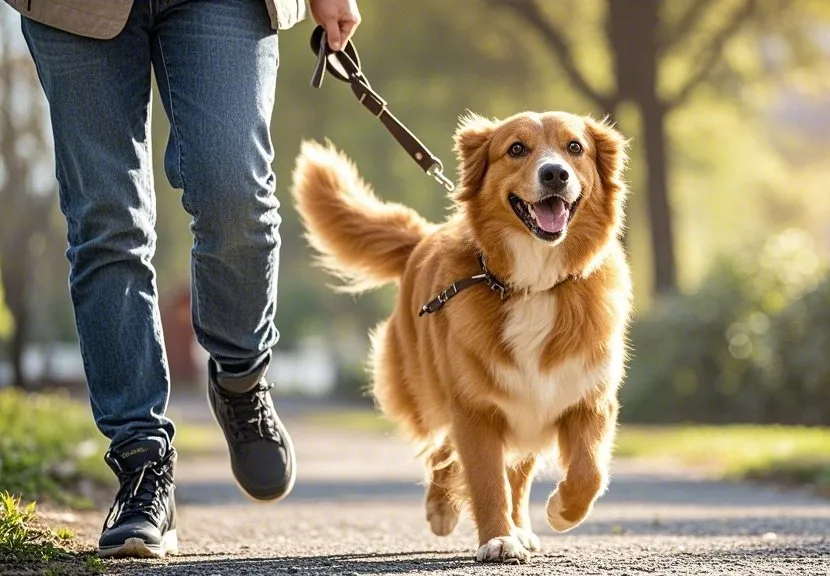
Understanding Retractable Leashes
Retractable leashes are designed to allow dogs more freedom during walks, extending from 10 to 26 feet. However, their use requires responsible handling to prevent potential accidents.
| Feature | Description |
|---|---|
| Length | Typically extendable, giving dogs freedom to roam. |
| Mechanism | Uses a tension system to retract or extend. |
| Handle | Usually plastic, with a button to lock the leash. |
Potential Risks of Using Retractable Leashes
-
Reduced Control: One day, Luna saw a cat and ran across the street. I struggled to bring her back quickly. My heart stopped as she barely escaped traffic. This highlights how owners may struggle to quickly retract the leash in sudden encounters, reducing control over the dog.
-
Injuries: Another scare happened when she sprinted and reached the leash’s end abruptly, worrying me about her neck and spine. Dogs can sustain injuries if they bolt suddenly and reach the end of the leash abruptly, causing neck or spinal damage. Moreover, there’s a risk of rope burns if the leash tangles around limbs.
-
Training Challenges: Training with these leashes7 feels tough because dogs often get confused with so much freedom, making learning commands harder.
Safety Tips for Using Retractable Leashes
- Choose the Right Size: Pick a leash that suits your dog’s weight and strength.
- Environment Awareness: Use leashes like this only in open spaces without traffic or crowds.
- Proper Handling: Practice locking the leash quickly when surprises happen.
Alternatives to Retractable Leashes
For those who love their dogs too much to risk safety, consider alternatives such as standard or dual-leash systems which provide more control and reduce injury risks.
- Standard Leashes: Steady control makes these great for training.
- Dual-Leash Systems: Attach to both collar and harness for better security for dogs who try to escape.
For more insights on selecting dog leashes, check here8.
Evaluating When to Use a Retractable Leash
In my experience, it’s vital to think about your dog’s behavior, the walking area, and how comfortable you feel using retractable systems. Well-trained dogs might do fine in open places with these; however, in risky spots like urban settings with traffic, traditional leashes might be safer.
Retractable leashes extend up to 26 feet.True
Retractable leashes typically extend from 10 to 26 feet, allowing dogs more freedom.
Standard leashes provide more control than retractable ones.True
Standard leashes offer consistent control, unlike retractable ones which can reduce control in emergencies.
What Safety Gear is Essential for Outdoor Adventures?
Have you ever been on a hike and realized too late that bringing only snacks was not enough? Safety gear is not just a clever idea; it’s something you must have.
For outdoor journeys, packing a first aid kit is important. Dress in layers suitable for the weather. Bring tools for finding your way, including a map, compass and GPS. Carry emergency items too. A whistle and flashlight are crucial for full preparation. Really crucial.
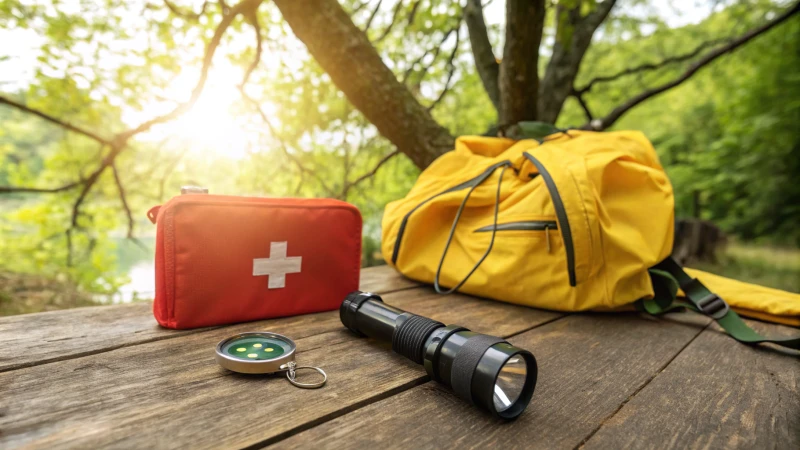
First Aid Kit Essentials
Starting out in hiking, I quickly discovered that a well-prepared first aid kit9 is crucial. Picture needing more than a band-aid and having nothing else. Now, I ensure to pack bandages, antiseptic wipes, tweezers, and pain relievers. These items resemble a tiny medical team that caters to my adventures.
| Item | Purpose |
|---|---|
| Bandages | For cuts and abrasions |
| Antiseptic wipes | Cleaning wounds to prevent infection |
| Tweezers | Removing splinters or ticks |
Weather-Appropriate Clothing
Layering clothes helps with surprising weather. One morning, I wore many layers in the cold air. By noon, only a t-shirt remained. Moisture-wicking fabrics are wonderful because they keep me dry on high mountains and in sudden rain. A hat and gloves protect me from the cold. Very important.
Use the layering technique10 to maintain comfort during unpredictable weather changes.
Navigation Tools
Getting lost feels scary. My map, compass, and GPS device guide me. These tools provide the courage to wander away from usual paths. Before trips, I spend time learning how to use them. They add an extra safety net, helping me find my way back home.
- Map: Shows the terrain.
- Compass: Crucial for knowing direction.
- GPS Device: Tracks exact location.
Emergency Equipment
The sharp sound of a whistle11 signals for help effectively. It’s essential if needed. A flashlight helps when late hikes stretch into night. Tiny yet powerful, these tools protect me. A Swiss Army knife also stays in my kit, ready to tackle unexpected challenges.
Hydration and Nutrition
Drinking enough water is crucial. Once, on a hot day, I ran out of water—never again! Now, I pack plenty of water and carry snacks like nuts and energy bars. On longer trips, a water purifier is key. I keep my supplies in check, always ready for the trail’s surprises.
Protection from Elements
Sunscreen and sunglasses matter as much as my boots. Sunburn hurts and squinting constantly is annoying. Insect repellent is vital too, especially after so many uninvited bugs joined me outdoors.
| Item | Function |
|---|---|
| Sunscreen | Protects skin from harmful UV rays |
| Sunglasses | Shields eyes from sun glare |
| Insect Repellent | Prevents bites from insects and ticks |
Packing these essential items transforms my outdoor trips from possibly tense to really enjoyable adventures! With the right gear in my backpack, I’m prepared for any surprises nature offers.
A first aid kit is essential for outdoor adventures.True
A first aid kit helps manage injuries and emergencies effectively.
A GPS device is unnecessary for navigation outdoors.False
GPS devices provide precise location tracking, crucial for navigation.
Conclusion
Discover essential dog accessories including harnesses, collars, leashes, and safety gear that enhance your pet’s comfort and safety during walks and outdoor adventures.
-
Discover why no-pull harnesses are effective in reducing pulling behavior. ↩
-
Learn about the durability and comfort benefits of leather harnesses. ↩
-
Understand why dogs escape collars and how martingale collars prevent this. ↩
-
Learn about humane training methods and how prong collars fit in. ↩
-
Ensure proper fitting for comfort and effectiveness in head halters. ↩
-
Discover safe practices for using choke chains effectively. ↩
-
Discover effective methods for training your dog while using a retractable leash safely. ↩
-
Learn how to select a suitable dog leash based on your pet’s needs and walking environment. ↩
-
Learn how to pack a first aid kit tailored for hiking adventures, ensuring you’re prepared for common injuries. ↩
-
Discover the art of layering clothing to maintain comfort across various weather conditions during outdoor activities. ↩
-
Understand why a whistle is crucial for safety, aiding in emergency signals during hikes. ↩


